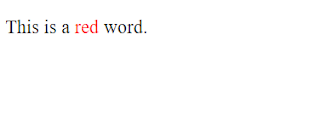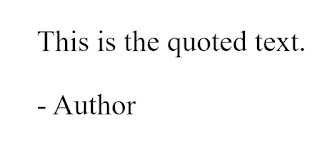Html text tags and how to use HTML Text tags with examples
HTML text tags play a crucial role in structuring and
formatting text on a webpage. These tags are essential for creating headings,
paragraphs, lists, and other text elements. Understanding how to use HTML text
tags correctly is fundamental for anyone venturing into web design and development.
In this article, we will explore various HTML text tags and their applications,
providing you with the knowledge and expertise to effectively utilize them in
your web projects.
HTML HEADING
HTML provides six heading tags, ranging from <h1> to <h6>
, to define different levels of headings. These tags are used to indicate the
hierarchical structure of your content, with <h1> representing the highest level of importance
and <h6> denoting the lowest. It's important to use
these tags in a logical manner to maintain a clear structure for your web
pages. Here's an example of how the heading tags are used:
<h1>This is a Heading 1</h1>
<h2>This is a Heading 2</h2>
<h3>This is a Heading 3</h3>
<h4>This is a Heading 4</h4>
<h5>This is a Heading 5</h4>
<h6>This is a Heading 6</h6>

HTML Paragraph Tag
The <p> tag, short for paragraph, is used to define a block of text or a logical division of content. It represents a single unit of information or thought within your web page. The <p> tag is a block-level element, which means it creates a new line before and after the enclosed text by default.
Here's an
example of how the <p> tag is used:
<p>
The 'p' tag, short for paragraph, is used to define a block of text or a logical division of content. It represents a single unit of information or thought within your web page. The 'p' tag is a block-level element, which means it creates a new line before and after the enclosed text by default. Here's an example of how the 'p' tag is used:
</p>
HTML Span Tag
The <span> tag is an inline element used as a generic
container to apply styles or other attributes to a specific section of text
within a larger block of content. Unlike block-level elements, the <span> tag doesn't add any line breaks or semantic
meaning on its own. It acts as a wrapper for targeted content, allowing you to
apply custom styles or add event handlers. Here's an example of how the <span> tag can be used:
<p>This is a <span style="color: red;">red</span> word.</p>
HTML BLOCKQUOTES
The <blockquote>
tag is used to mark up block-level
quotations or citations within your HTML document. It allows you to visually
set apart quoted text that has been taken from another source. The <blockquote> tag creates an indented block of text,
visually distinguishing it from the surrounding content. Here's an example of
how the <blockquote> tag is used:
<blockquote>
<p>This is the quoted text.</p>
<footer>- Author</footer>
</blockquote>
HTML ABBR TAG
The <abbr> tag is used to define abbreviations or
acronyms within your HTML document. It provides an opportunity to explain or
expand the abbreviation for better understanding. The <abbr> tag is an inline element and does not
inherently add any visual formatting. It serves as a semantic marker and can
provide additional context when used correctly. Here's an example of how the <abbr> tag is used:
<p><abbr title="Hypertext markup language">HTML</abbr>
In the above example, the abbreviation "HTML" is enclosed within the <abbr> tags. The title attribute is used to provide the full form or explanation of the abbreviation. When users hover over or focus on the abbreviation, the title attribute value is displayed as a tooltip or hint, offering further clarity.
Using the <abbr>
tag ensures that the meaning of
abbreviations is conveyed to all users, including those using assistive
technologies or encountering your content for the first time.
FAQ
What Are HTML Text Tags?
HTML text tags are a set of predefined elements that allow web developers to format and structure text within a webpage. These tags act as containers for text content and provide instructions to web browsers on how to display and render the text. By using HTML text tags, developers can define headings, paragraphs, lists, and other textual elements, creating a visually appealing and organized layout for their web pages.
Why Are HTML Text Tags Important?
HTML text tags are essential for several reasons. Firstly, they improve the accessibility and usability of a website. By properly structuring the content with heading tags, users can navigate the page more efficiently using assistive technologies like screen readers. Additionally, search engines rely on HTML text tags to understand the hierarchy and relevance of content, which affects a website's search engine optimization (SEO).
How to Use HTML Text Tags?
Using HTML text tags is relatively straightforward. Below, we will explore the most commonly used HTML text tags and provide examples of how to utilize them effectively.
| Tags | Explain |
|---|---|
| H | HTML provides six heading tags, ranging from 'h1' to 'h6' , to define different levels of headings |
| P | The 'p' tag, short for paragraph, is used to define a block of text or a logical division of content. |
| ABBR | The 'abbr' tag is used to define abbreviations or acronyms within your HTML document. |
| Blockquote | The 'blockquote' tag is used to mark up block-level quotations or citations within your HTML document. |
| SPAN | The 'span' tag is an inline element |



